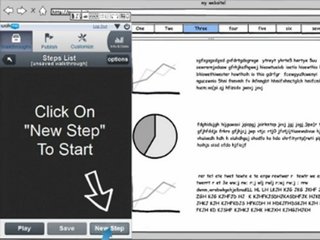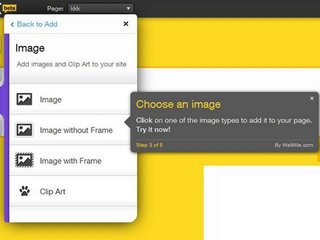Global AI in healthcare market expected to rise to $164B by 2030
The market size for 2023 was $10.31 billion
Read more...
Digital adoption platform WalkMe is on a mission to change the way that people interact with software: instead of helping users understand how to use the application, it wants applications to better understand the people using them, to know how to proactively help them get the most out of what they are doing.
On Thursday, the company announced it has raised $40 million in Series F financing. The round was led by Insight Venture Partners, with participation from WalkMe’s first institutional investor, Mangrove Capital Partners. With this latest funding WalkMe has now raised a total of $207.5 million to date.
The last time the company last raised funding, a $75 million round in July of last year, it was reportedly valued at $935 million. When I asked Rephael Sweary, co-founder and president of WalkMe, if this new round had brought WalkMe into unicorn territory, meaning a valuation of at least $1 billion, he wouldn't say either way.
"We’re a private company so I can’t comment on that, you can understand that a company growing at our rate that raised more than $200 million, you can guess where we are as far as valuation," he told me.
Launched in 2012, WalkMe has gone through a number of iterations in its life; when the company raised funding in 2014, it was about helping people navigate the Internet by allowing companies to create walkthroughs of their websites for visitors and employees. In 2016, it was about assistance, going beyond navigation to help the user do more on the site.
Currently, the company calls itself a "digital adoption platform," where it simplifies the user experience on B2B applications using by gaining insights, engagement and guidance capabilities through machine learning and artificial intelligence.
WalkMe now has nearly 2,000 customers worldwide, including over 30 percent of the Fortune 500, and the company plans to use the funding to expand further globally, going deeper into both the Asia Pacific and European markets.
While WalkMe currently has an office in Australia and already has presence in Japan, while also developing one in Singapore, the plan now is to be more localized, Sweary told me.
"There is a difference between having a team of three people versus actually setting up offices, to be able to service customers and do everything in region. We’ve proved there is the need in the market and we know how to approach the market, and now we’re expanding on that," he said.
By actually setting up offices in those regions, WalkMe can more effectively cater to the individuals needs of that market.
"We want to deliver the entire value chain in the localized language. The product itself works in multiple languages, that’s not the problem, but how do you market to them? How do you create PR? How do you do business development? How do you do sales? How do you do professional services? How do you do pre-sales in that language? All of those things are things that increase your conversation rate, and many times bring a lot of efficiency into the model. We’re doing them today but we believe that we will be much more efficient and much more successful doing it directly," Sweary told me.
The company is growing quickly, and is already very close to doubling its revenue from 2017, and it's anticipating even further growth thanks to the global push.
"The hope it to see at least a doubling of new our business that we generate, both from our existing customers and from new customers. The hope is to lay the foundation that will allow us to grow at a very rapid pace also in 2020," said Sweary, who also noted that it will try to strike a balance between that growth and the efficiency it is able to offer its customers.
"When we’re finalizing our plans for this year, we might be able to grow faster but the efficiencies would really break. We’re trying to balance those two. When you look at market conditions, sometimes the market wants growth over efficiency, and sometimes they prefer effiencity over growth. I think the smart way is actually balancing both because if you are only focus only on growth, and there is a hiccup in the market, it’s very painful," he said.
The new offices will also require a building up of the team, which has growth from 600 to 660 employees in just a few months. While plans are not finalized, WalkMe does expect to have close to 800 employees next year.
Acquisition strategy
In addition to the geographic expansion, WalkMe also says its plans to invest in expanding its solution offering, which it do by making additional technology acquisitions.
"There are two types of acquisitions we envision ourselves doing. One type is in order to rapidly penetrate into an existing market. Such an acquisition could be a service provider or a small vendor that is in market and can help us speed the initial period of going into. Usually this will be small partner of our who does integration and because of how they’re built it makes sense for us to acquire them," Sweary told me.
"The second type is a technology acquisition, that’s the ones that we’ve done to date, and that’s the ones we’re constantly going to be looking for."
So far, WalkMe has made three acquisitions: native mobile AI company Abbi in January 2017, visual analytics company Jaco in April 2017, and, most recently, machine learning company DeepUI in June 2018.
Thanks to these acquisitions, Sweary said he now believes that WalkMe has developed a smaller percentage of its vision than he believed before the company started acquiring other companies, thanks to all of the new use cases that have been discovered through these acquisitions.
"If you had spoken to me a year ago, I would have told you that WalkMe had developed only 30 percent of its vision. Since then we’ve made some acquisitions, we continued developing more and more, but today I feel we only developed 20 percent of our vision. The reason is that our vision is becoming bigger as we go deeper and deeper into our customers and really understand what their needs are," he said.
That vision is to "shift the relationship between the user and the underlying technology," taking it from users trying to understand how digital assets worked, to the digit assets understanding how the users work.
"Digital will understand the user, will understand what the user is trying to do, and will help him achieve that. And by saying our vision is growing is we find more and more use cases where we can apply this mechanism."
Getting ready to go public
In June, Sweary told me that WalkMe had plans to go public in 2019. When asked now if this new round had any effect on those plans, he said, "It’s exactly at the same place."
"We will be ready to go public in 2019 both from a revenue perspective and internal processes, operations, IT and all that," said Sweary.
"What we need is to make a decision based on market timing, on where we are in our strategy. Once you go public it’s very hard to make significant investments long-term because you need to be very predictable on one hand. On the other hand, efficiency is becoming something very, very important. Based on where we are with our plans, with our infrastructure, we will make a decision. We want to be ready so it is our decision."
The IPO market is hot right now, with a number of major tech companies either going public or filing for the IPOs, mostly notably Dropbox and Spotify, as well as Smartsheet, Pluralsight, Zuora and DocuSign. According to Pitchbook, the first half of 2018 saw total deal value for VC-backed IPOs of $6.9 billion, putting it on pace for the second biggest year since 2012, and that was the year of the record breaking Facebook IPO.
"If we were ready today we would have gone today because the timing is perfect. Assuming everything else, I don’t that think now we’re ready, but we will be ready in 2019," said Sweary.
The market size for 2023 was $10.31 billion
Read more...At Culture, Religion & Tech, take II in Miami on October 29, 2024
Read more...The company will use the funding to broaden the scope of its AI, including new administrative tasks
Read more...Startup/Business
Joined Vator on
WalkMe enables all online publishers and ISVs to create interactive on-screen 'Walk-Thrus' that assist end-users to quickly and easily complete even the most complex tasks.
Users receive clear and error-proof on screen instructions displayed as sequential balloon hints within the website or app, while they perform the actual process from start to finish.
Think of it as if you are sitting right next to your users and guiding them through each task, step-by-step, on any site platform.
Benefits
WalkMe eliminates end-user confusion which directly reduces the number and the length of support calls and the investment needed to create or update user manuals and instructional videos.
More importantly, publishers who have implemented WalkMe report dramatic increase in user task-completion, increased conversions, as well as end-user satisfaction and greater overall site utilization.
Other Considerations
Using WalkMe’s system does not require any modification or integration to the underlying software. The 'Walk Thru' creation process is simple and does not require any technical skills.
WalkMe supports all popular browsers (Chrome, Explorer, Safari etc.) and does not require end-user download.
WalkMe is a software-as-a-service product, offering a wide pricing scale. WalkMe offers its product free for “start-up” sized customers, trending upwards to our silver package for small businesses, leading to a customized quote for WalkMe’s largest customers. Self-hosting options are available.
WalkMe complies with the strictest security standards and has been certified by a 3rd party security firm, which satisfies our data sensitive customers and the financial institutions we are currently servicing.





